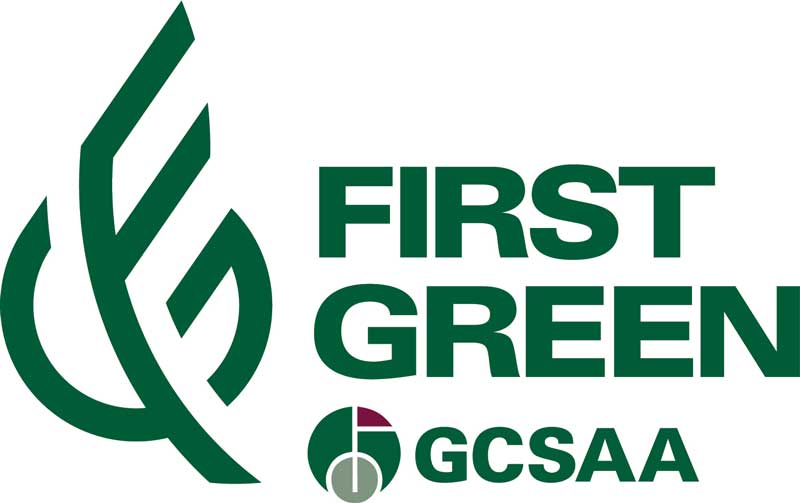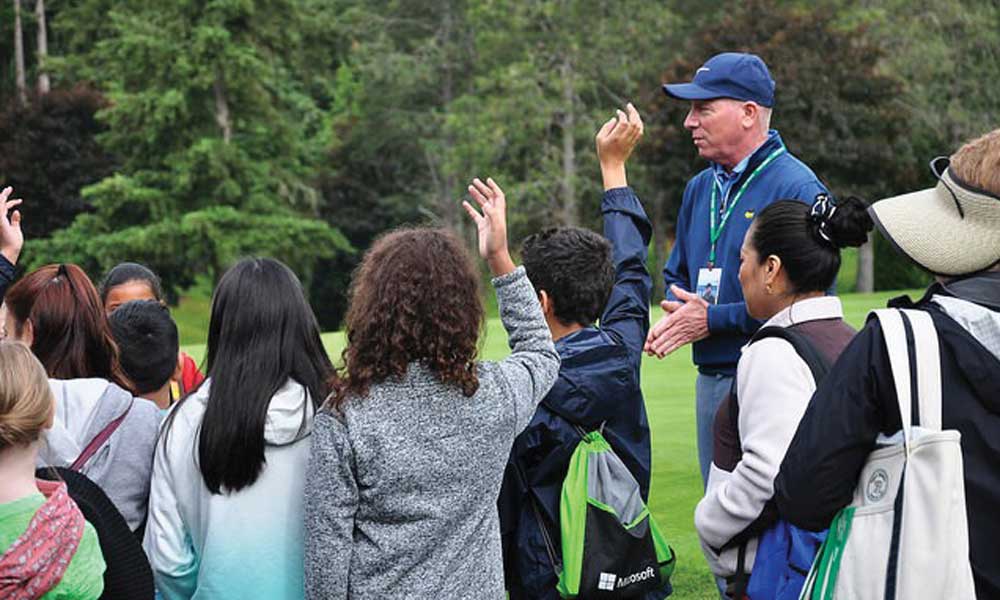Ask golf course superintendents across the U.S. to name their biggest challenges, and consistently you will hear one response that makes almost everyone’s list: lack of a course maintenance labor pool. Nationwide, golf course management in most areas struggles to find or keep hourly workers for their crews.
While a workforce shortage is a problem that won’t be resolved overnight, there are organizations working to change the underlying dynamics in the big picture that contribute to this issue. And there are a few viable tactics golf course superintendents can deploy in the meantime either to improve or offset the pain of being understaffed at key positions.
Effecting Change for the Long Haul

Golf for Change is part of the Nehemiah E-Community’s Urban Impact initiative. Established more than two decades ago, the Nehemiah Project and E-Community is a non-profit global outreach committed to changing lives through entrepreneurship training and job and business development. A faith-based program, the Nehemiah E-Community provides training, coaching, scholarship opportunities, business capital, community and in select areas, business incubators.
Within the organization, the Golf for Change program was launched by Charles G. Kearse, Director of Nehemiah Urban Impact. Charles recognizes that taking pride in a job well done, respecting the environment, and being motivated to get up early or stay late because it is your responsibility isn’t a value that children develop instinctively. In households where these standards are not demonstrated by parents, kids may not understand them.
For the past 20 years, Charles has been mentoring and coaching youth primarily from the inner city or underserved communities. “I’ve personally worked with roughly 100 urban children or teens, using the game of golf as a tool for engagement. Golf is a great way to share life skills and leadership and plant seeds of entrepreneurial development in young people. Everything about golf offers the opportunity for exposing kids to a social path of building positive relationships, values and life skills.”
Through partnerships with First Tee of Massachusetts, Central Florida, and Charlotte, North Carolina, Charles has helped over 500 teens achieve goals including college graduation, career establishment, business ownership, and community development.
“From maintenance work to tournament prep to all the responsibilities in the clubhouse and pro shop, kids can’t get interested in these jobs if they don’t realize that the job even exists or that it is an option for them,” said Charles. “They have to be exposed to the rewards of working as part of a team, doing a job well, and taking pride in their work.”
Golf for Change is currently working in partnership with TopGolf and other business and golf industry leaders, including a partnership with NASCAR for high-visibility exposure linked with the many events leading up to the Presidents Cup, which in 2022 will be hosted in NASCAR’s hometown of Charlotte.
The First Green is a program many golf course superintendents already know and support. It is a STEM program of the EIFG, the philanthropic organization of GCSAA. Superintendents recognize GCSAA as the Golf Course Superintendents Association of America, and they may also know EIFG as the Environmental Institute for Golf. The EIFG is a philanthropic organization of GCSAA, dedicated to fostering sustainability through research, awareness, education, programs, and scholarships for the benefit of golf course management professionals, facilities, and the game.
STEM programs refer to science, technology, engineering, and mathematics learning opportunities facilitated in partnership with public schools. By turning golf courses into classrooms, First Green is expanding exposure to the beneficial opportunities and impact of golf courses on communities and on the environment. Recognized as the only program of its kind in the world, First Green has impacted more than 15,000 school children and teens since its founding in 1997.

The First Green provides structured opportunities for golf course superintendents and turf managers to host field trips for students from their local middle or high schools. Superintendents who register to host through First Green receive a supplies list (much of which they will already have on hand) and full lesson instructions for conducting each lab activity they choose to offer. As the Introduction to First Green explains, “Every square inch of fairway, rough and greens offer many lessons in golf course habitat.”
The innovative programs of the First Green provide a failsafe plan for exposing students to the math, science, ecology and life lessons of a golf course. Every step of an outing, starting with how-to reach out to school administrations, is supported with resources to make the experience fun and exciting for students and painless for superintendents.
GCSAA Chapters hosts workshops to introduce members to First Green and will facilitate workshops with volunteers from the local chapter. Hosting and volunteering on First Green Field Trips allows GCSAA members to earn service points toward their Class A or CGCS goals.
Do Less with Less
The First Green and Golf for Change provide experiences and exposure to golf courses as places to play and work and enhance the environment. These programs position students from varied economic backgrounds to see firsthand that golf courses have opportunities for them, whether their goal is a reliable job in a great work environment or a golf industry career that includes higher education.
However, inspiring the next generation of workers doesn’t resolve the immediate workforce problem. The USGA, aware that a labor shortage challenges superintendents across the country, has a few quick-fix recommendations.
Paul Jacobs, USGA Agronomist, in his article, “Labor Suggestions for Solutions” gives five practical tips:
- Reduce maintenance in nonessential areas
- Make the work shift hours you offer more flexible to accommodate workers in school or with additional jobs
- Rake bunkers Aussie-style, raking on the bunker bottom on a regular basis, leaving the face smooth
- Reduce the frequency for re-grassing by investing in higher performance turf and simplify bunker design or even eliminate some bunkers
- Upgrade technology to more automated or more efficient options
Other suggestions include outsourcing select activities to independent contractors and, of course, keeping wages competitive. Some superintendents have been successful in filling staff positions by enticing golfers, especially teens or retirees, with pay plus plenty of free or deeply-discounted playing or range time. Cross training existing employees from the pro shop and other roles to handle specific tasks can also help reduce the need for additional hires.
Thinking Outside the Tee Box
Jim Pavonetti CGCS, golf course superintendent at Fairview Country Club in Connecticut, has a twofold approach to sustaining his staffing needs. (See: Black Water and Environmentally Green Results, February 2020).
The Fairview property includes acreage that previously belonged to a hospital. Jim has been able to incorporate on-site housing for much of his maintenance crew into his job offers because the course property features dormitory-style accommodations once used to house nursing staff.
The potential to include housing in a hiring package is a huge windfall for attracting seasonal workers from all parts of the country. Superintendents who struggle to find staff might consider starting a conversation with club members to see if anyone has rental properties to offer at a reduced rate or in return for desirable concessions. Other options include developing affordable deals for seasonally underutilized college campus housing, camp retreats and other outside-the-box venues.
The second strategy Jim uses in securing his staffers year after year is one of relationship building. By creating strong connections within his seasonal crew, he finds that they continually replenish their own ranks by referring friends or family members when openings become available. “Because they have created their own network,” said Jim, “I start the process and incoming referrals are already prepped by their peers when they start working.”
Bigger Than Golf
The labor crisis in the golf industry is part of a pervasive problem in America in which both manual and skilled labor workers are in short supply. An economic recession would offset the situation, but that’s a high price to pay for a temporary reprieve.
For golf course superintendents who must compete with hundreds of other employers for the same manual labor pool, relief will likely come only through a combination of increased automation and continually creative hiring strategies.
Linda Parker has been writing professionally since the 1980s. With clients in finance, sports, technology, change enablement, resorts and nonprofit global initiatives, Linda helps organizations communicate their stories in meaningful ways to the people they most want to reach. She has authored, ghostwritten or contributed to more than a dozen nonfiction books. Linda is a member of the Authors Guild and the Golf Writers Association of America. You can connect with her at linda@glindacreative.com
















